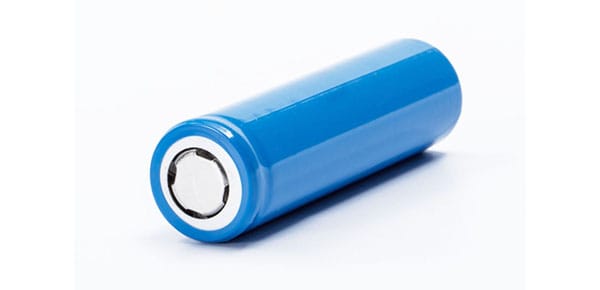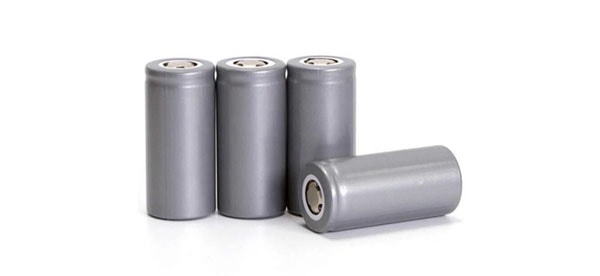How to Custom Battery Packs
Application
Keeping secrets is often desirable when it comes to new projects. However, in the realm of custom battery projects, sharing some general information about the application can be beneficial. By disclosing the intended purpose, such as a speaker, health tracker, or detector, even without divulging specific details, it enables battery engineers to provide tailored solutions based on the appropriate battery chemistries that align with the design requirements. This collaborative approach ensures that the final battery solution is optimized for the specific application, maximizing performance and meeting the unique needs of the project.
A. LifePo4 Battery Cell

When it comes to battery cells, variations in size, energy density, and performance play a crucial role in different applications. Whether it’s for electric vehicles (EVs), e-bikes, e-motorbikes, rickshaws, yachts, UPS systems, energy storage systems, or mobile tower stations, choosing the right battery cell is essential. Let’s explore how these factors come into play:
Size Matters – Battery cells come in various sizes, ranging from small cylindrical cells to larger prismatic or pouch cells. The size of the battery cell impacts the overall dimensions and weight of the device or system it powers. Smaller devices like e-bikes or mobile tower stations may benefit from compact-sized cells, while larger applications like EVs or energy storage systems can accommodate larger cells to maximize energy capacity.
Energy Density for Extended Use – Energy density refers to the amount of energy stored in a battery per unit of its volume or weight. Higher energy density allows for longer operation before recharging. For EVs, e-bikes, and e-motorbikes, high energy density cells are desirable as they enable longer driving ranges. Similarly, energy storage systems and mobile tower stations benefit from cells with higher energy density to provide extended backup power or sustained operation.
Performance and Power Output – The performance of battery cells is a crucial factor in demanding applications. EVs and e-motorbikes require cells that can deliver high power output for quick acceleration and sustained performance. In contrast, energy storage systems and UPS systems prioritize cells that can handle high discharge rates efficiently to provide reliable backup power during outages. Choosing cells with the appropriate performance characteristics ensures optimal functionality and longevity for each specific application.
B. Cylindrical Battery of 18650 Battery Cell and 26650

The 18650 battery is the optimal choice for fulfilling lithium battery requirements due to its numerous advantages. One standout reason is that it eliminates waiting times, allowing for swift implementation of your project. Additionally, its small minimum order quantity (MOQ) makes it accessible even for smaller orders.
The applications that benefit from 18650 batteries span a wide range, including ultrasound devices, drug delivery systems, patient monitors, imaging systems, Nexus Publications, medical/hospital carts, ventilators, and defibrillators (such as Advanced Life Support, Automated External Defibrillators, Implantable Cardioverter Defibrillators, and Implantable Cardioverter Defibrillators). Surgical tools like ENT instruments, haemostatic forceps, diagnostic instruments, home surgical kits, anesthesia equipment, as well as motorized wheelchairs and medical UPS systems, also rely on the reliability of 18650 batteries.
The key takeaway is to prioritize cylindrical batteries, such as the 18650, for your project. Due to their abundant stock in the market, opting for cylindrical batteries ensures faster mass production of your product. By considering 18650 batteries as your first choice, you can accelerate your project’s progress and bring your innovative medical devices to market more efficiently.
C. Lithium Polymer Battery CellLike 487878 750545

For the dimensions of 4.8mm (Thickness) * 78mm (Width) * 78mm (Height), you can calculate the capacity by multiplying the volume with a ratio of 0.09-0.13. Taking the example above, the calculation would be 4.8 * 78 * 78 * 0.115 = 3400mAh. It’s important to note that the ratio may vary depending on the volume, but generally, it can be treated as 0.11-0.12.
Here are some key applications for batteries with these dimensions:
A) Portable Equipment: Post machines, handsets, portable printers, data terminals.
B) Medical Instruments: ECG monitoring instruments, ultrasound devices, breath machines, electrocardiographs.
C) Industrial and Communication Instruments: Flaw detectors, fusion splicers, optical power meters, gas detectors.
D) Consumer Electronics: PDAs, MID devices, PCs, POS machines, electric tools, laptops, e-bikes, emergency light power sources, data cameras, DV cameras, speakers, MP3 players, MP4 players, portable DVD players, and more.
E) Portable Equipment: POS systems, portable printers, handsets. Electric toys: RC cars, boats, helicopters, etc.
An important tip is to provide the maximum dimensions of your desired battery to your vendor and inquire about off-the-shelf models of LiPo batteries. This approach can significantly speed up the start of your project, which is particularly beneficial if you want to conduct market tests. By utilizing readily available battery models, you can accelerate the development process and quickly gauge market demand.
Decide the Working Current and Peak Current
Working Current, also known as Constant Current, refers to the average current drawn by a device during normal operation. If you don’t have technical expertise to determine the working current, providing the wattage of the device can help us assess the power requirements more effectively.
On the other hand, Peak Current, also referred to as Max Current, describes the highest current demand that occurs momentarily when a device starts up. This surge in current is often associated with devices that contain motors or have high drain current requirements. It is important to consider the peak current to ensure that the battery can supply the necessary power during these transient periods.
Decide the Working hours of the Battery
Determining the capacity of the battery is crucial for designing a suitable solution. Battery capacity is typically measured in watt-hours (Wh) or milliampere-hours (mAh).
It’s essential to provide information regarding the desired working hours of your device. The working hours directly impact battery pricing and size requirements. By understanding the expected operating time, we can accurately estimate the capacity needed to meet your device’s power demands. This information allows us to optimize the battery design, ensuring sufficient energy storage to support the desired usage duration.
Additionally, specifying the working hours helps in determining the most cost-effective battery solution that aligns with your budget and size constraints. By considering the expected usage time, we can customize the battery capacity to strike a balance between performance, pricing, and size.
Decide Size Requirement
In some cases where you might have already wanted the battery to be in-house, let us know what room is left for the battery.

Choose Battery Casing
There are mainly 3 types of outer casing: PVC, Plastic casing, and metal casing.

Select Connector Type
Popular types like JST, and JSH.

Others like 55*25 type

Check the Quantity
Quantity does influence the product price, even if you don’t know, it’s better to simply ask for a range.
FAQ about Custom Battery Packs
Q: Who will handle the CAD design for my Battery Pack?
A: While we prefer to receive a CAD design from you, we can also assist with CAD design if needed. Our team can provide prototypes of the battery pack for your final review and approval.
Q: What type of cells will be used in my Battery Pack?
A: The type of cells used will depend on the specific requirements of your project. We work with various lithium technologies such as LiPo or LiFePO4, and we will select the most suitable cells for your application.
Q: Do you sell your battery packs in the USA and Europe?
A: Yes, we have customers in both the USA and Europe. We even have local dealers in these regions. Feel free to reach out to us for inquiries or more information.
Q: I have limited knowledge about batteries, can you assist me with the design process?
A: We understand that batteries can be complex. At New Storage Tech, we are here to help. As a one-stop solution provider for all your lithium battery pack needs, simply send us an email, and we can discuss the details of your project and assist you with the design.
Q: Are your batteries waterproof?
A: If you require waterproof batteries, please contact us to discuss your specific needs. We will evaluate the feasibility and provide you with more information. Feel free to leave us a message, and we will promptly assist you.



















